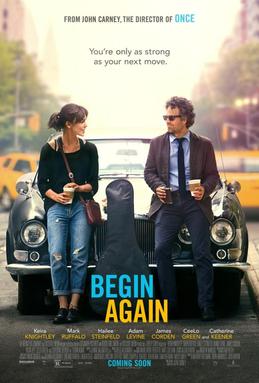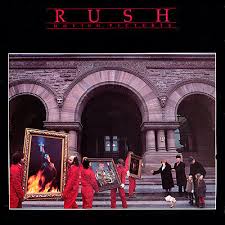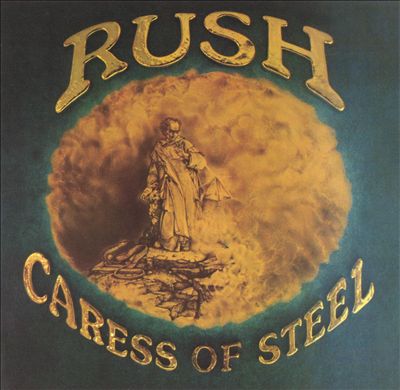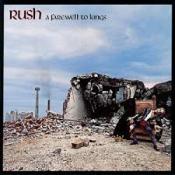Movie Review: Begin Again
 Begin Again, pairing Keira Knightley and Mark Ruffalo, is nothing if not an ode to music, and I’m a sucker for films that reveal the inner workings of the music industry or the magic of composition. Even the remake of The Jazz Singer escapes a BOMB rating in my book since we get to see Neil Diamond sing “Love on the Rocks” in the recording studio. But when it comes to music in film, two terrific movie moments come to mind: Illeana Douglas's character singing the Costello/Bacharach tune, “God Give Me Strength,” in Grace of My Heart, and the moment in Once when the heretofore inattentive recording engineer finally begins to notice the magic happening in the studio as the band plays “When Your Mind’s Made Up.” I’m not sure anything in Begin Again quite matches either of these scenes (despite being directed by Once director John Carney), but many come close, and the film tells a terrific story with appealing characters to boot.
Begin Again, pairing Keira Knightley and Mark Ruffalo, is nothing if not an ode to music, and I’m a sucker for films that reveal the inner workings of the music industry or the magic of composition. Even the remake of The Jazz Singer escapes a BOMB rating in my book since we get to see Neil Diamond sing “Love on the Rocks” in the recording studio. But when it comes to music in film, two terrific movie moments come to mind: Illeana Douglas's character singing the Costello/Bacharach tune, “God Give Me Strength,” in Grace of My Heart, and the moment in Once when the heretofore inattentive recording engineer finally begins to notice the magic happening in the studio as the band plays “When Your Mind’s Made Up.” I’m not sure anything in Begin Again quite matches either of these scenes (despite being directed by Once director John Carney), but many come close, and the film tells a terrific story with appealing characters to boot.
Ruffalo is a down-and-out record label exec who happens upon a little less down-and-out Knightley, who’s fresh off a breakup with Adam Levine. She sings a heartfelt song in an East Village bar prior to her return to England, and Ruffalo, desperate to find a performer who might end his streak of signed failures, immediately recognizes her potential. In a particularly effective scene, we get to hear (and see) what Ruffalo’s character hears: not just a woman singing on-stage to a guitar, but a song that slowly builds to the accompaniment of piano, cello, bass, guitar and drums. This works beautifully, and illustrates just how well a film can reveal the transcendental nature of music.
Through a series of well-done flashbacks, we learn the details of Knightley’s and Levine’s relationship, as well as that of Ruffalo and his ex, Catherine Keener, whose daughter Hailee Steinfeld provides the most contrived plot points in the movie (that she would take fashion advice from Knightley and that – lo and behold – she can play guitar well enough to record a tune on the first take). Levine does a fine job as a rising star who’s falling for the trappings of fame, and CeeLo Green provides the film some street cred. James Cordon, who plays Greta’s friend from England, is basically a more amped up Glen Hansard from Once, though a little less believable.
The film requires us to suspend belief on a few points, as Ruffalo never fails to find ample parking in New York City, easily finds public places to record a band, and manages to attract superb string musicians willing to play for free. But whatever. It’s a good story, not reaching the height’s of Carney’s Once, but a perfectly enjoyable ride, and so much better than most movies in which music is a major character.
If there’s one thing I could change about the film, it would be the slick production of the songs themselves. Here we are, watching an ensemble record songs live on a New York City street, but we hear none of the natural flaws and ambient noise associated with such an endeavor: instead, everything’s perfect, from the local kids singing backup vocals to Steinfeld’s guitar solo. Such is the world we live in, as auto-tune and click tracks have taken over even some of the grittiest bands. But think of what made Once so magical: the belief that the characters were performing HERE and NOW. Why Carney decided to gloss things up so significantly after achieving such perfection eight years ago is perplexing.






















